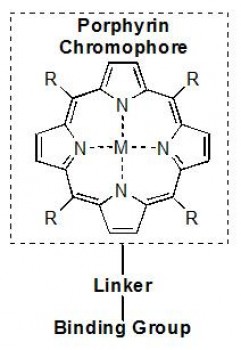Events
Developing New Materials for Organic Solar Cells
| Date: | Friday 31 October 2008 14:30 - 15:30 |
| Location: | SEMS Seminar Room |
David L. Officer
ARC Centre of Excellence for Electromaterials Science,
Intelligent Polymer Research Institute, University of Wollongong,
Northfields Avenue, Wollongong NSW 2500, Australia.
The potential of organic-based photovoltaic devices for the efficient and sustainable utilization of solar energy using renewable materials is beautifully demonstrated on a daily basis by photosynthesis, the harvesting of light by chlorophyll and the use of the resulting captured energy to split water or convert carbon dioxide into a chemical feedstock. While the emulation of photosynthesis itself remains one of the great scientific challenges of the 21st Century, light harvesting by aromatic molecules such as porphyrins is well established in a number of photovoltaic devices. For example, the sensitization of high surface area semiconductor substrates by aromatic dyes has led to highly efficient photoelectrochemical (PEC) , or heterojunction solid-state solar cells. , In addition, aromatic molecules and polymers, along with electron acceptors such as fullerenes are the principal constituents of "plastic" solar cells. In each case, however, the structural requirements of the light harvesting components are different and need careful design.
For over ten years, we have been synthesising porphyrins and investigating their potential as light harvesting dyes typically through attachment to an inorganic or organic semiconductor. The syntheses of porphyrins that we have developed have allowed us to systematically vary the porphyrin chromophore by substitution (R), metallation (M) or array formation, as well as the linker and binding group. Consequent attachment of these light harvesting dyes to titanium dioxide photoanodes and their incorporation into photoelectrochemical (PEC) cells has led to the design of the highest efficiency porphyrin dye (7%) used in a dye-sensitised solar cell. , This porphyrin chemistry has allowed us to readily obtain porphyrin-substituted polythiophenes and investigate their potential in plastic solar cells. This has also led us to develop a wide variety of polythiophene materials. Here, we will present our progress in designing light harvesting dyes for both PEC and polymer photovoltaic cells, and discuss what we have learnt about designing better light harvesting materials.


